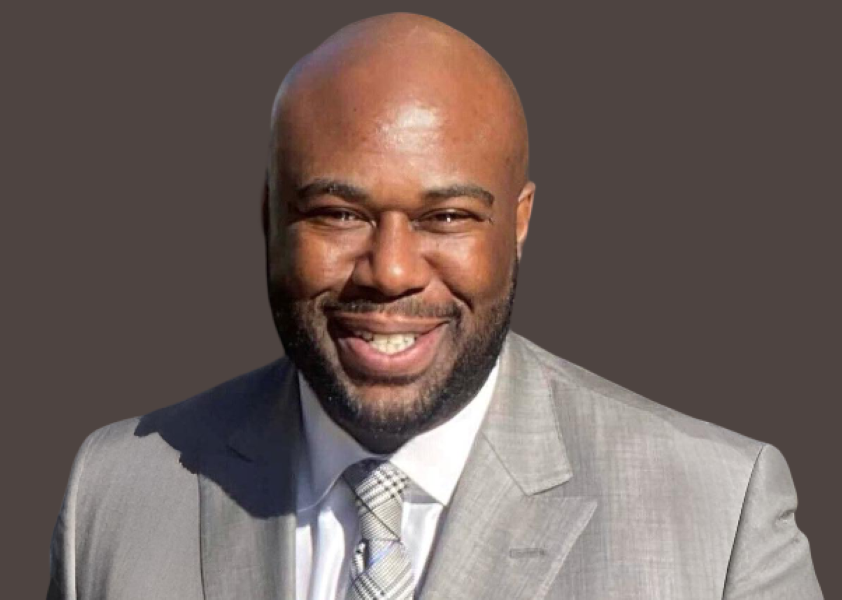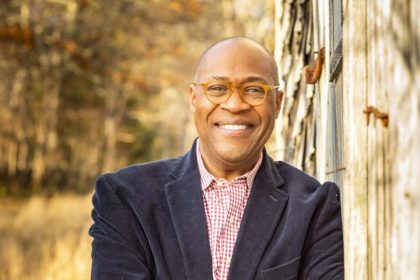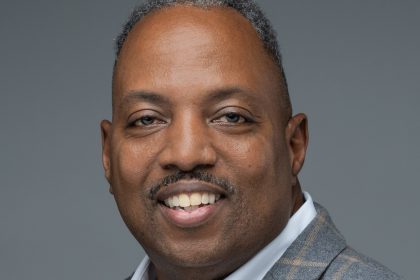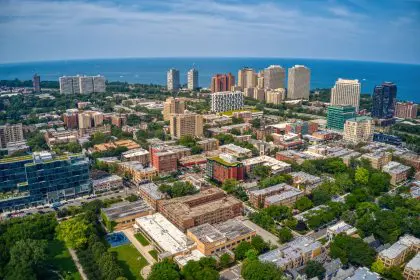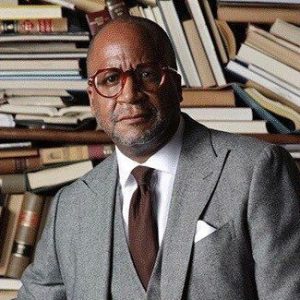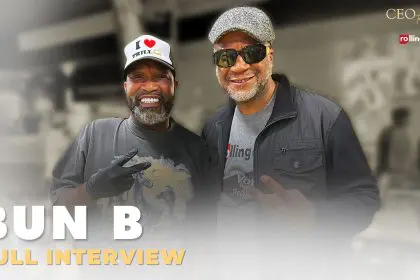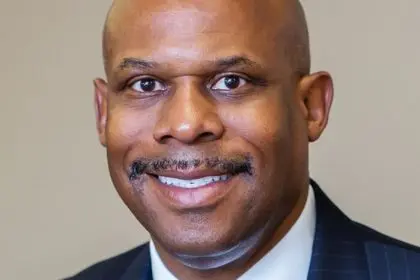Rob Lockett isn’t just leading LISC Detroit—he’s reshaping how community development works in a city poised for transformation. Since stepping into the Executive Director role in late 2024, Lockett has brought a bold, service-centered vision to an organization with a 35-year legacy of impact. With experience in both nonprofit and corporate philanthropy, he champions deep equity, digital innovation, and systemic change as essential tools for empowering Detroit’s communities. In this exclusive Rolling Out interview, Lockett unpacks how servant leadership, real partnerships, and a people-first mindset are fueling a new chapter in the city’s revitalization.
Your work at LISC Detroit centers on strengthening communities through economic justice. What core values drive your leadership in the nonprofit space, and how have they shaped your mission at LISC?
The core values which inform my leadership come from several sources, however all center around similar theme – doing all things with a servant’s heart. Service is always at the forefront of whatever I do as a person, as well as a leader working in the non-profit sector. Given the who and why related to our work, one has to approach it looking to solve problems with a service-based posture. At LISC, I am able to translate this value to my team as we continue our commitment to the people we serve in Detroit.
The better I serve them as a leader, the better they will serve our mission, issue areas, and the stakeholders we work for. This year, we are celebrating 35yrs. of service in Detroit. You don’t have that kind of longevity and trust without service being at the center of that track record.
You’ve worked in both corporate and nonprofit sectors. What pivotal experience led you to dedicate your leadership to community development, and how did that moment redefine your purpose as a leader?
Making the decision to leave the Local Advisory Board and come into the day-to-day operation was a pivotal choice for me, and the deciding step in returning to community development full-time. Most recently, I was working in Housing Stability with the Rocket Community Fund. While at Rocket, I had the opportunity to create a lot of programming, working very closely with my partners across all our markets.
Because I had experience creating programing and strategies for non-profits, both as a practitioner and a leader, I could see the opportunities organizations could take to service their missions with a little capital and a lot of belief. I was greatly successful in doing so, however felt a bit removed from the action, and soon began to look for opportunities that could get me closest to the solution, which I believe happens on the front end of programmatic design.
LISC operates at the intersection of housing, financial stability, and neighborhood revitalization. What’s been the most complex strategic challenge you’ve faced—and how did you guide your team and partners through it?
A complex set of challenges the whole community development ecosystem has faced recently surrounds the challenging environment we are in federally related to the number of directives affecting the organizations we partner with. As a national organization, we work with over 1,400 organizations across our 38 offices and rural community footprints, and many of our partner organizations were adversely affected by some of the compliance items and subsequent funding changes at the federal agency level.
These changes have resulted in a re-evaluation of our programs and activities to ensure compliance, while maintaining our commitment to our core mission. As a leader, it was important to contact our local partners to understand how they are affected. When the directives came down from the executive, we quickly sprung into action, working alongside our national program and policy partners to garner support and lean on existing relationships with elected officials for advocacy of our work which cuts across a number of communities and groups.
In a city like Detroit with deep-rooted challenges and incredible potential, how do you balance immediate community needs with long-term systemic transformation?
It requires taking a ‘both and’ approach to problem-solving. Much of the city’s social infrastructure moves in a reactionary way against systems designed with intended as well as unintended adverse consequences for local and long-time residents. Support organizations like LISC have to maintain a dual focus, both on short term fixes and long-term solutions to create the environment for Detroiters to continue to thrive.
Ideally, you would back into the long-term outcomes with tactical actions that build upon each other to get you to a place where you start to realize systematic disruption for your issue area. Because we are taking pretty big swings when you look at some of our issue areas; community development and affordable housing, economic development and advancement, and overall social infrastructure and ecosystem advocacy, these are long tail, deep-rooted issues to solve for. It’s why LISC was created in the first place.
How does LISC Detroit approach innovation, especially when serving communities that are often digitally underserved or economically excluded? What initiatives are pushing boundaries?
As an organization, we have to continue to innovate, otherwise we fail to be relevant. Given the speed which change happens, we must be flexible and adaptive to the needs of our stakeholders. Once such example is our engagement with Verizon, and the Digital Ready platform which provides technical training to over 390,000+ businesses. We also support 140+ business development organizations specifically to connect local business owners to new strategies, improved internal processes, and capital access.
These initiatives are pushing boundaries because they are connecting historically disconnected parts of the overall value chain – corporate firms and end user organizations who are also private customers in most cases. The value for each partner is realized when organizations are able to rely on LISC as a convening partner in service to our communities.
What does leadership mean to you in a mission-driven organization where metrics of success are often measured in lives impacted rather than revenue earned?
I believe it’s all about impact when you are working in a mission driven organization/industry. How many lives can be impacted through the initiatives and programs we invest in and create? How can we positively impact our communities and increase our shared prosperity? These are the questions which drive a solid portion of our work and are central to our DNA as an organization.
The decisions we make, the partnerships we pursue, and the outcomes we are measured against determine the level of impact we have, and I know for myself, as well as my colleagues, we weigh our collective effort according to the outcomes our clients and stakeholders can achieve through partnering with us.
How do you build a resilient organizational culture that keeps staff, community partners, and funders aligned around equity, inclusion, and long-term impact?
I believe you centralize it. Plainly, you model it through choices and decisions you make on behalf of your service population. DEI isn’t dead, it’s simply under attack. We have to be vigilant around our collective defense against forces that attempt to color being diverse, equitable, or inclusive as something bad. Our collective differences make us a better, more informed society, and we must acknowledge what is both similar and different about us to solve problems in a culturally competent and effective manor.
From the leader seat, I model this to my team and how I lead them, who are as diverse as they come. 30% of my team are women, and we have multiple cultural identities represented throughout our organization. I believe it’s important to lead and recognize the ‘whole human’ in front of you, no matter how they identify or present.
Talent is vital in the nonprofit sector. What’s your approach to developing future leaders within your team—and how do you empower them to lead with empathy and effectiveness?
Talent is one of the main legs of the stool for the success of our work. Dedicated, thoughtful, and passionate people are hard to come by, so I ensure my team has what they need by way of access to professional and leadership development. Internally, our organization does a great job of providing tools and resources for our colleagues to increase their subject matter expertise and value to the work. I also ensure my team is moving at a steady pace.
This work can get heavy and start to weigh on one’s mental and emotional health. Downtime is important for perspective and clarity, so we promote and prioritize having healthy, well taken care of team members. Regarding empathy and effectiveness, we are very high touch with our partner organizations. Sometimes our partners simply need a resource for sound advisement. We speak regularly and convene often to stay apprised of issues and events occurring in their respective organizations so we can assist effectively.
As a leader working at the grassroots level, how do you manage the balance between accountability to funders and loyalty to the communities you serve?
That is a great question, for a number of reasons. I believe in terms of alignment; we have a track record of ensuring the needs of our community stakeholders are met through given the capital we deploy. We’ve played various roles in that process and are most often utilized as a convening organization due to the strength of our platform. We bring to bear the tools and relationships on behalf of all our stakeholders in order to affect the issue.
The central point again is service, so we balance these two by putting first the needs of the community because they are the ones best suited for implementing the solution. This is where the accountability piece comes into play. We must do what we say we will in order to garner trust and continue to represent our community members. We do this by ensuring they inform the solution early and often. We bring the knowhow, the platform, the capital, the opportunities, etc.; however, it all starts with high quality resident engagement and solution orientation at the local level.
Looking ahead, what’s your vision for legacy—not just for LISC Detroit, but for how urban philanthropy and nonprofit leadership can redefine equity in cities across America?
My vision for legacy is to leave the work better than I found it. I want to play a part in the development of communities for years to come. I think the sector needs leaders who are enterprising, and understand the linkages within the mission and various value propositions for private sector, government, etc. I think there is an opportunity for philanthropy to be increasingly effective in urban settings – which is exciting and one that keeps me motivated to continue to push the line.
To me, the path starts with partnership with those who really care and get it. Otherwise, the conversation can fall on deaf ears. I think philanthropy should continue to be bold, serving as the venture capital of the social sector. The solutions have to be equal to or more comprehensive than the damage, and for some that damage is generational. Ultimately, it’s going to take all of us, leading and serving to get it done.

